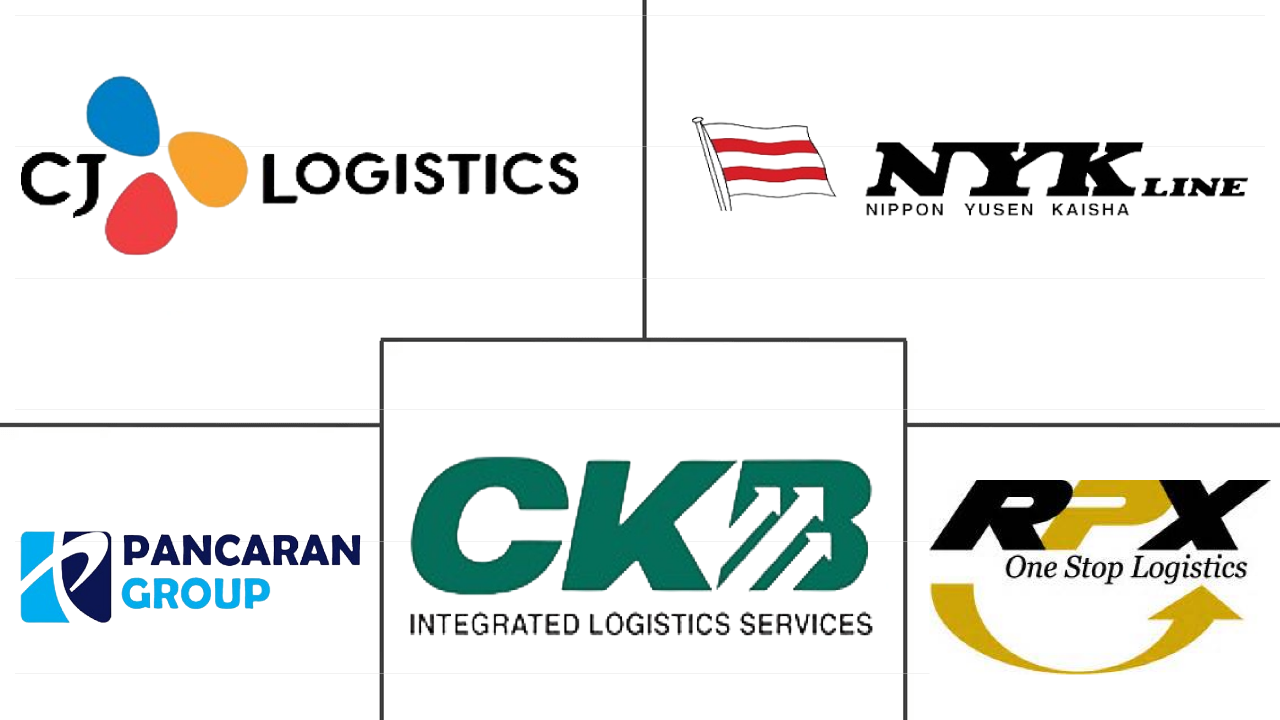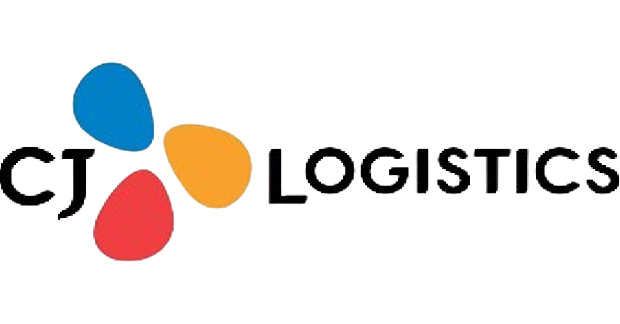Market Size of indonesia road freight transport Industry
|
|
Study Period | 2017 - 2030 |
|
|
Market Size (2024) | USD 50.30 Billion |
|
|
Market Size (2030) | USD 72.25 Billion |
|
|
Largest Share by End User Industry | Wholesale and Retail Trade |
|
|
CAGR (2024 - 2030) | 6.22 % |
|
|
Fastest Growing by End User Industry | Wholesale and Retail Trade |
Major Players |
||

|
||
|
*Disclaimer: Major Players sorted in no particular order |
Indonesia Road Freight Transport Market Analysis
The Indonesia Road Freight Transport Market size is estimated at 50.30 billion USD in 2024, and is expected to reach 72.25 billion USD by 2030, growing at a CAGR of 6.22% during the forecast period (2024-2030).
50.30 Billion
Market Size in 2024 (USD)
72.25 Billion
Market Size in 2030 (USD)
5.41 %
CAGR (2017-2023)
6.22 %
CAGR (2024-2030)
Largest Market by Distance
73.40 %
value share, Long Haul, 2023
The prominent factor that is driving the demand for long-haul trucking is the rise in exports and imports. In 2022, exports grew by 26% YoY, while imports grew by 21% YoY.
Largest Market by Goods Configuration
65.17 %
value share, Solid Goods, 2023
Construction, textiles, electronics, automobiles, and other industries contribute majorly to the solid goods segment in the Indonesian road freight transport market, making it the largest product type.
Largest Market by End User Industry
31.78 %
value share, Wholesale and Retail Trade, 2023
The rise in the e-commerce sector is driving the wholesale and retail trade segment. Indonesia's e-commerce is projected to record a CAGR of 10.41% during 2023-2027.
Fastest Growing Market by Truckload Specification
6.97 %
Projected CAGR, Less than-Truck-Load (LTL), 2024-2030
SMEs are one of the prominent drivers for the growth of the LTL segment. As of 2022, there were over 62 million SMEs in the country, and the number is expected to increase in the future.
First Leading Market Player
0.38 %
market share, CJ Logistics Corporation, 2022

CJ Logistics Corporation has 17 vehicles in Indonesia. It has 68 equipments for its RFT and other operations and also has 15 warehouses in Indonesia.
Growing internet penetration and e-commerce sales are driving the demand for road freight services
- The retail sector in Indonesia is one of the most promising among Asian countries due to its large population and the growing middle-income group with higher purchasing power. The surge in smartphone usage and internet penetration are among the key drivers behind the rise of e-commerce in recent years in Indonesia. The rate of internet penetration increased from 64% in 2020 to 73.7% in 2022, marking a 15.15% rise. The Indonesian Retailers Association (Aprindo) expected retail sales performance to improve in the coming years. In addition, the retail sales growth in 2023 is estimated to reach around 4%.
- The manufacturing sector's contribution to GDP experienced a YoY growth of 9.94% in 2022. It was the strongest component of the country’s economic growth in terms of productivity. The country demonstrated significant growth in its basic metal industry (14.8% YoY) and the automotive industry (10.67% YoY). Overall, total exports from the industrial sector reached USD 206.35 billion in 2022, a 16.45% increase compared to 2021. As a result, the demand for road freight services increased in the country.
- The increase in agricultural exports in Indonesia is expected to drive the growth of the agriculture, fishing, and forestry end-user segment. The increase in exploration and production activities is expected to drive the oil and gas, mining, and quarrying end-user segment. Indonesia aims to increase its crude oil lifting to 1 million bpd by 2030 and is boosting efforts to attract investments. Upstream investments in 2022 stood at USD 12.3 billion, up from USD 10.9 billion in 2021. In 2023, investment was targeted at USD 15.54 billion.
Indonesia Road Freight Transport Industry Segmentation Indonesia Road Freight Transport Industry Segmentation
Agriculture, Fishing, and Forestry, Construction, Manufacturing, Oil and Gas, Mining and Quarrying, Wholesale and Retail Trade, Others are covered as segments by End User Industry. Domestic, International are covered as segments by Destination. Full-Truck-Load (FTL), Less than-Truck-Load (LTL) are covered as segments by Truckload Specification. Containerized, Non-Containerized are covered as segments by Containerization. Long Haul, Short Haul are covered as segments by Distance. Fluid Goods, Solid Goods are covered as segments by Goods Configuration. Non-Temperature Controlled, Temperature Controlled are covered as segments by Temperature Control.
- The retail sector in Indonesia is one of the most promising among Asian countries due to its large population and the growing middle-income group with higher purchasing power. The surge in smartphone usage and internet penetration are among the key drivers behind the rise of e-commerce in recent years in Indonesia. The rate of internet penetration increased from 64% in 2020 to 73.7% in 2022, marking a 15.15% rise. The Indonesian Retailers Association (Aprindo) expected retail sales performance to improve in the coming years. In addition, the retail sales growth in 2023 is estimated to reach around 4%.
- The manufacturing sector's contribution to GDP experienced a YoY growth of 9.94% in 2022. It was the strongest component of the country’s economic growth in terms of productivity. The country demonstrated significant growth in its basic metal industry (14.8% YoY) and the automotive industry (10.67% YoY). Overall, total exports from the industrial sector reached USD 206.35 billion in 2022, a 16.45% increase compared to 2021. As a result, the demand for road freight services increased in the country.
- The increase in agricultural exports in Indonesia is expected to drive the growth of the agriculture, fishing, and forestry end-user segment. The increase in exploration and production activities is expected to drive the oil and gas, mining, and quarrying end-user segment. Indonesia aims to increase its crude oil lifting to 1 million bpd by 2030 and is boosting efforts to attract investments. Upstream investments in 2022 stood at USD 12.3 billion, up from USD 10.9 billion in 2021. In 2023, investment was targeted at USD 15.54 billion.
| End User Industry | |
| Agriculture, Fishing, and Forestry | |
| Construction | |
| Manufacturing | |
| Oil and Gas, Mining and Quarrying | |
| Wholesale and Retail Trade | |
| Others |
| Destination | |
| Domestic | |
| International |
| Truckload Specification | |
| Full-Truck-Load (FTL) | |
| Less than-Truck-Load (LTL) |
| Containerization | |
| Containerized | |
| Non-Containerized |
| Distance | |
| Long Haul | |
| Short Haul |
| Goods Configuration | |
| Fluid Goods | |
| Solid Goods |
| Temperature Control | |
| Non-Temperature Controlled | |
| Temperature Controlled |
Indonesia Road Freight Transport Market Size Summary
The Indonesia Road Freight Transport Market is poised for significant growth, driven by the expanding retail sector and increasing e-commerce activities. The country's large population and burgeoning middle-income group are enhancing purchasing power, which, coupled with rising smartphone usage and internet penetration, is fueling the e-commerce boom. The manufacturing sector also plays a crucial role, with substantial contributions to GDP and exports, particularly in basic metals and automotive industries. This industrial growth is boosting the demand for road freight services. Additionally, the agriculture, fishing, and forestry sectors are expected to see increased activity, further driving the need for efficient transport solutions. The oil and gas, mining, and quarrying sectors are also anticipated to contribute to market expansion as Indonesia ramps up crude oil production and attracts investments.
Infrastructure development is a key focus for Indonesia, with substantial investments planned to enhance transportation networks, including roads, rail, and ports. The government's commitment to infrastructure projects is evident in the allocation of significant funds to support the development of the new capital city and improve existing transport facilities. The transportation and storage sector has shown remarkable growth, underscoring its importance in facilitating the movement of goods across the archipelago. Despite the fragmented nature of the road freight market, major players like CJ Logistics Corporation and PT Cipta Krida Bahari are actively expanding their operations. Innovations such as electrifying delivery fleets are also being implemented to enhance sustainability in logistics operations.
Indonesia Road Freight Transport Market Size - Table of Contents
-
1. MARKET SEGMENTATION (includes market size in Value in USD, Forecasts up to 2030 and analysis of growth prospects)
-
1.1 End User Industry
-
1.1.1 Agriculture, Fishing, and Forestry
-
1.1.2 Construction
-
1.1.3 Manufacturing
-
1.1.4 Oil and Gas, Mining and Quarrying
-
1.1.5 Wholesale and Retail Trade
-
1.1.6 Others
-
-
1.2 Destination
-
1.2.1 Domestic
-
1.2.2 International
-
-
1.3 Truckload Specification
-
1.3.1 Full-Truck-Load (FTL)
-
1.3.2 Less than-Truck-Load (LTL)
-
-
1.4 Containerization
-
1.4.1 Containerized
-
1.4.2 Non-Containerized
-
-
1.5 Distance
-
1.5.1 Long Haul
-
1.5.2 Short Haul
-
-
1.6 Goods Configuration
-
1.6.1 Fluid Goods
-
1.6.2 Solid Goods
-
-
1.7 Temperature Control
-
1.7.1 Non-Temperature Controlled
-
1.7.2 Temperature Controlled
-
-
Indonesia Road Freight Transport Market Size FAQs
How big is the Indonesia Road Freight Transport Market?
The Indonesia Road Freight Transport Market size is expected to reach USD 50.30 billion in 2024 and grow at a CAGR of 6.22% to reach USD 72.25 billion by 2030.
What is the current Indonesia Road Freight Transport Market size?
In 2024, the Indonesia Road Freight Transport Market size is expected to reach USD 50.30 billion.

